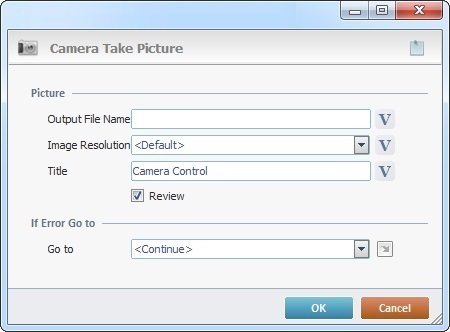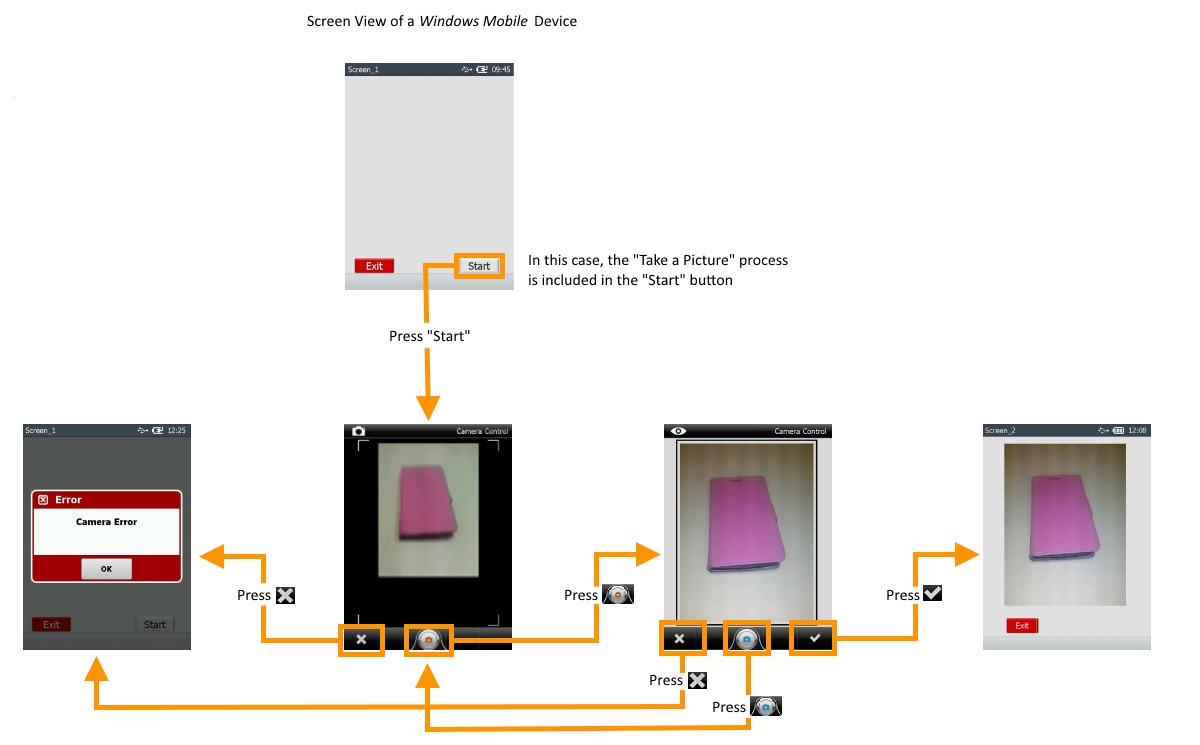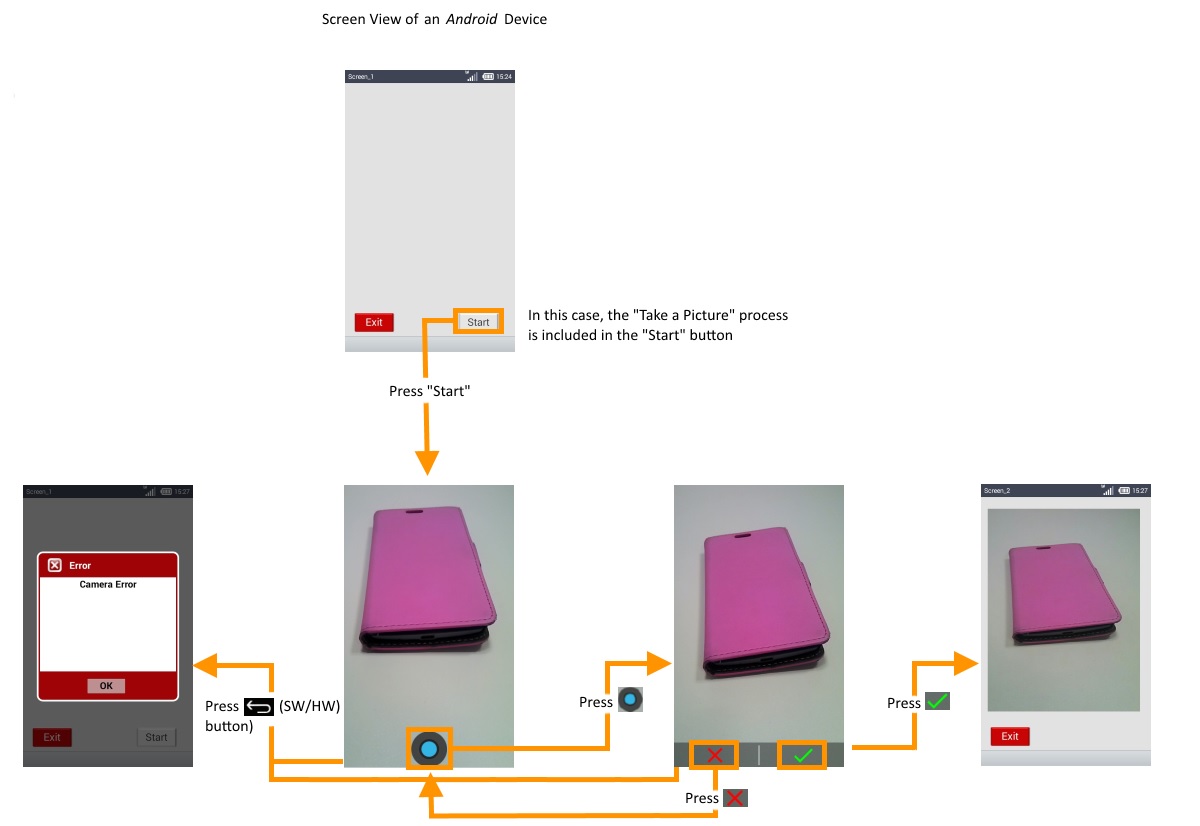Working with Take Picture Process
Process Purpose
The "Take Picture" process allows for the use of the device's photo camera to take a picture/capture an image.
When you add a process, you are required to define its settings. This occurs in the process's properties window which is displayed automatically after having added the "Take Picture" process.
If any subsequent edition is required, double-click the process to open its properties window and enter the necessary modifications.

Fill in the following options:
Picture |
||
Output File Name |
Define the name for the image file OR click
For more detailed information, register/log in to our MCL Community and access MCL's Knowledge Base ("File Name Best Practices").
|
|
Image Resolution |
Select the desired resolution for the image from the drop down OR click
|
|
Title |
Maintain the default title. It represents the "Camera Capture's" dialog box within the device. |
|
Review |
Check this option to enable the viewing, in the device's screen, of the picture you take. It allows you to accept or reject the picture that was taken or repeat (take another picture). See The Review Option in the Device. |
|
If Error Go to |
||
Go to |
Select a target location from the drop-down or
|
|
Detail of a ![]() window:
window:

"S:Menu" is a screen included in the same program as the process.
"R:Routine_1" is a routine included in the same program as the process.
If required, click ![]() to attach any relevant notes to this process. Click it and enter your notes in the resulting text box. These notes will be displayed in the corresponding "Actions" tab or "Process" window (in the "Notes" field) and in the "Developer Report".
to attach any relevant notes to this process. Click it and enter your notes in the resulting text box. These notes will be displayed in the corresponding "Actions" tab or "Process" window (in the "Notes" field) and in the "Developer Report".
After filling in the required options, click ![]() to conclude or
to conclude or ![]() to abort the operation.
to abort the operation.
The added process is displayed in the corresponding "Actions" tab or "Process" window.
![]() You can use relative paths to refer the file(s) you want to use in your project. See Working with Aliases.
You can use relative paths to refer the file(s) you want to use in your project. See Working with Aliases.
![]() If you want to use a label as a target destination, you can use the "Auto-Label" mechanism. This alternative to the "Set Label" process allows you to create a label in the properties window of a process - specifically, in the fields used to define target destinations (ex: the "If Error..." type fields). See To Automatically Create a Label.
If you want to use a label as a target destination, you can use the "Auto-Label" mechanism. This alternative to the "Set Label" process allows you to create a label in the properties window of a process - specifically, in the fields used to define target destinations (ex: the "If Error..." type fields). See To Automatically Create a Label.
![]()
Use the right-click in MCL-Designer's input boxes to access some related options as well as the general "Cut", "Copy"; "Paste"; "Search" actions (active/inactive according to the current context).
Ex: If you right-click the "Variable" input box (included in a "Conversion's" properties window), you are provided with general editing/search actions and other more specific options such as "Variable Select" (see "Variable Select"); "Variable Insert" (see "Variable Insert"); "Insert Special Character" (see To Insert Special Characters into a Control's Text Input Field) and "Localization Select" (see Localization List).
If you right-click another input box, it may provide other possibilities.

The "Review" Option in the Device
Below is an example of what the operator will view and what he can execute when handling a WM or an Android device, if the "Review" option is checked:

